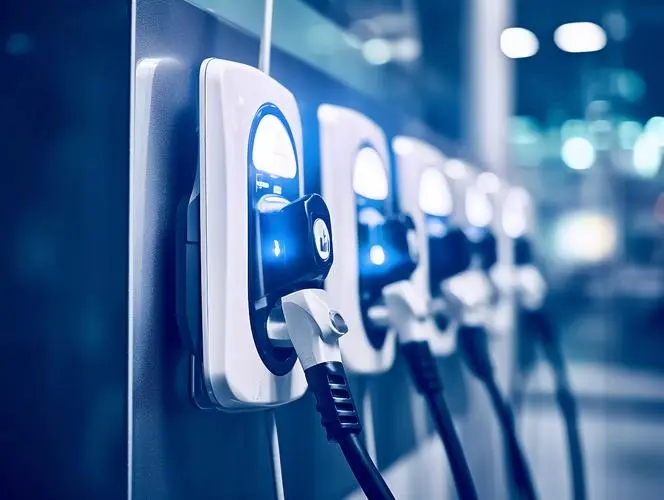소식
AC and DC Power Supplies: Twin Flowers in the World of Electricity
저자: ZYG 전원 모듈 Time: 2024-11-21
In the vast universe of power technology, AC and DC power supplies coexist like twin flowers, each blooming with its own unique light. They are not only an indispensable power source for modern electronic devices, but also an important cornerstone for promoting scientific and technological progress and industrial development. This article will explore the basic concepts, working principles and characteristics of AC and DC power supplies in depth, with the aim of revealing the unique charm and importance of these two forms of electricity to readers.
1. Basic Concepts of AC and DC Power Supplies
AC and DC power supplies, as the name implies, are divided into two categories: alternating current (AC) and direct current (DC). AC power refers to a power supply whose current direction changes periodically over time. Its current magnitude and direction will go through a cycle of positive peak, zero, reverse peak, and then return to zero in one cycle. DC power refers to a power supply whose current direction remains constant. The current flows steadily through the circuit and does not change direction over time.
2. Working Principle of AC and DC Power Supplies
The working principle of AC power is based on the law of electromagnetic induction, that is, when a conductor moves in a magnetic field, an electromotive force is generated in the conductor, thereby generating current. In an AC power supply, mechanical energy is usually converted to electrical energy by a generator. The relative movement of the magnetic field inside the generator and the conductor (usually a coil) causes the direction of the current in the coil to change continuously, forming an alternating current.

The operating principle of a DC power supply is relatively simple and direct. It typically converts AC power to DC power through devices such as batteries, DC generators, or rectifiers. In a DC power supply, the current flows from the positive electrode and returns to the negative electrode after passing through the load, forming a closed circuit, and the direction of the current always remains the same.
3. Comparison of Characteristics of AC and DC Power Supplies
Stability: DC power supplies are known for their stable current output and are not affected by the power frequency. Therefore, DC power supplies are widely used in applications that require stable power, such as battery-powered devices and some electronic devices. In contrast, the current magnitude and direction of AC power supplies change over time. Although this change has advantages in some applications (such as power transmission and distribution), it can cause inconvenience in applications that require stable current.
Conversion capability: AC power supplies can easily change voltage through transformers, which is a major advantage of AC power in power transmission and distribution. Transformers use the principle of electromagnetic induction to change voltage by changing the ratio of coil turns without changing the direction of the current. DC power supplies do not have this capability, and their voltage changes must usually be achieved by other means, such as using resistors to reduce the voltage or switching power supplies.
Power conversion efficiency: In the process of power conversion, AC and DC power supplies have their own advantages and disadvantages. AC power supplies have higher efficiency in power transmission and distribution because transformers can reduce power loss during transmission. However, inside electronic devices, DC power supplies usually have higher energy conversion efficiency because DC power can directly drive electronic components, reducing the loss during energy conversion.
In summary, AC and DC power supplies, as twin flowers in the power world, each have unique advantages and application scenarios. Together, they form the cornerstone of modern power technology, providing a steady stream of energy for scientific and technological progress and industrial development. On the path of exploring power technology, we must not only make full use of the advantages of AC and DC power supplies, but also constantly seek technological innovation and breakthroughs to promote the continuous development and progress of power technology.
이전의: AC and DC power supplies: What’s the difference?
다음: DCDC Power Module: How to convert electrical energy efficiently and stably?
관련 정보
-
2023-8-24
Efficient AC to DC Converter for LED Lights: A 12V Solution
Introduction LED lights are becoming increasingly popular due to their energy efficiency and long lifespan. However, to power these lights, an efficient AC to DC converter is required. In this article, we will explore a 12V solution for converting AC power to DC power for LED lights. This solution offers high efficiency and reliability, making it an ideal choice for various lighting applications. Background LED lights operate on direct current (DC) power, whereas the power supplied from the electrical grid is in the form of alternating current (AC). Therefore, a converter is necessary to transform the AC power into the required DC power for LED lights to function properly. The efficiency of this conversion process is crucial to minimize energy...
세부 정보보기 -
2023-7-11
24V AC to DC Converter: Efficient Power Conversion for Versatile Applications
Introduction: In today's technologically advanced world, power conversion plays a crucial role in various applications across industries. One important aspect of power conversion is the conversion from alternating current (AC) to direct current (DC). This article focuses on the 24V AC to DC converter, which is widely used for its efficiency and versatility in a multitude of applications. Efficiency of 24V AC to DC Converter: Efficiency is a crucial factor when it comes to power conversion. The 24V AC to DC converter is known for its high efficiency, ensuring minimal energy loss during the conversion process. This efficiency is achieved through the use of advanced components and robust circuitry that efficiently convert AC power to a stable DC output. With...
세부 정보보기 -
2023-7-12
The Evolution of Industrial AC-DC Converters: Advancements and Applications
Introduction Industrial AC-DC converters play a crucial role in converting alternating current (AC) power into direct current (DC) power. This conversion is essential for powering a wide range of industrial applications such as motor drives, power supplies, and renewable energy systems. Over the years, these converters have undergone significant advancements to meet the growing demands of the industrial sector. This article aims to explore the evolution of industrial AC-DC converters, highlighting the key advancements and their applications. Advancements in Industrial AC-DC Converters 1. Rectifier Circuits: Rectifier circuits are the fundamental building blocks of AC-DC converters. Initially, passive diode rectifiers were used, which were simple and cost-effective. However, these rectifiers suffered from poor power factor and low efficiency. To overcome these...
세부 정보보기 -
2022-11-8
자동차를 AC에서 DC 전원으로 변환하면 어떤 이점이 있습니까? 자동차를 AC에서 DC 전원으로 변환하면 여러 가지 이점이 있습니다. 아마도 가장 분명한 것은 가스 비용을 절약할 수 있다는 것입니다. 또한 자동차를 DC 전원으로 변환하면 배기 가스가 적게 발생하므로 더욱 친환경적입니다. 마지막으로 DC 전원으로 변환하면 고장날 가능성이 적어 자동차의 신뢰성도 높아집니다. 자동차를 AC에서 DC 전원으로 어떻게 변환합니까? 자동차를 AC에서 DC 전원으로 변환하는 몇 가지 방법이 있습니다. 첫 번째 방법은 인버터를 구입하는 것입니다. 인버터는...
세부 정보보기 -
2023-8-4
AC DC Converter HP Series : Efficient Power Conversion for High-Performance Applications
Introduction In today's world, efficient power conversion is crucial for high-performance applications. The AC-DC Converter HP Series is designed to meet these requirements, providing reliable and efficient power conversion for various industries. This article will explore the features and benefits of the HP Series and how it can optimize power utilization for high-performance applications. Features and Benefits 1. High Efficiency: The HP Series boasts high efficiency, ensuring minimal power loss during the conversion process. With efficiency levels of up to 98%, the converter maximizes power utilization, reducing energy wastage and overall operational costs. 2. Wide Input Voltage Range: The HP Series accommodates a wide input voltage range, making it suitable for various power sources. From low voltage to high voltage...
세부 정보보기 -
2023-7-9
Unleashing the Power of Communication: The Advantages of a Bidirectional Converter
In today's interconnected world, effective communication is crucial for the smooth functioning of various industries and sectors. Whether it is transmitting information between devices, converting data signals, or allowing different systems to communicate seamlessly, the role of a bidirectional converter cannot be underestimated. In this article, we will explore the numerous advantages of a bidirectional converter and its impact on enhancing communication capabilities. A bidirectional converter, as the name suggests, is a device that can convert signals in two directions. It can convert data from one type to another and vice versa. This flexibility allows for efficient communication between different systems, ensuring compatibility, and enabling the exchange of vital information. One of the significant advantages of a bidirectional converter is...
세부 정보보기


















